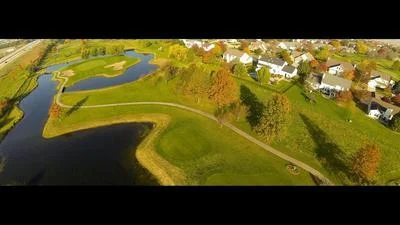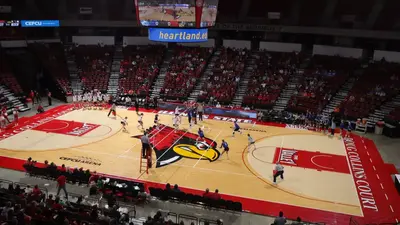American Pest Control Inc issued the following announcement on Sept. 6.
When the weather turns chilly, people spend more time indoors where it's cozy. Insects in Illinois have the same urges to seek the comfort of heated structures during colder months. Here are three insects that become annoying home invaders when autumn arrives.
1. MULTICOLORED ASIAN LADY BEETLES
The multicolored Asian lady beetle (Harmonia axyridis) is commonly called the ladybug. Ladybugs are beneficial insects that were imported to the U.S. to help control aphid populations on crops.
During cold Asian winters, ladybugs nestle in crevices of cliffs and grow dormant. In the U.S., ladybugs seek out similar crevices on the sides of homes and other buildings. If your home is near the woods, lady beetles may swarm and congregate on the sunny side of your house.
Ladybugs don't mind landing on different types of construction materials or home paint color. They do prefer to land on illuminated or sunlit surfaces. Ladybugs are also drawn to contrasting home colors. A white home with black window trim or a dark brown home with white shutters will attract Asian lady beetles.
Once inside the home, ladybugs don't breed but will:
Congregate in corners of ceilings
Emit foul-smelling liquid when crushed
Eat fruits and grapes
Inflict harmless bites on humans
Sealing up your home is a great tactic to keep ladybugs and other insect pests out of your home. Your pest control company can also spray your home's exterior walls to help control the ladybugs. Scooping up and vacuuming the bugs are other methods to control ladybugs.
2. CRICKETS
In Illinois, three species of crickets are the main invaders of buildings in autumn. Like many household pests, crickets are drawn to homes due to outside lighting, heavy mulch around foundations, and damp spots from leaks and poor drainage.
The types of crickets you may discover in your home are:
House crickets
Cave crickets
Field crickets
House crickets are yellow-brown with darker stripes and markings on their bodies. House crickets adore the coziest spots in your home and feast on human and pet foods. These insects can chirp and reproduce in your home and become a real nuisance.
Field crickets are black and slightly larger than house crickets. Field crickets are mainly seen indoors during autumn when plants and other foods are not available to the insects. If you live near fields or an agricultural area, you may notice more field crickets around the outside of your home during fall.
While inside, field crickets will chirp and chew on carpeting and fabrics. However, they can't breed indoors and generally die after a few weeks.
Cave crickets or camel crickets are sometimes mistaken for jumping spiders. Cave crickets are brown with long antennae and humped backs. A cave cricket has really long legs that allow it to spring up to three feet from its starting point.
Cave crickets don't make chirping noises, and they don't normally feed on human foods. The cave cricket often eats mold and mildew, so you'll find the insect pest in basements and other damp places in the home.
Sealing your home, eliminating damp spots, and cleaning up debris outdoors can reduce the numbers of crickets attracted to your home. Inside, your pest control company may use traps, baits, and pesticides to eliminate a cricket invasion.
3. BROWN MARMORATED STINK BUGS
Brown marmorated stink bugs (BMSB) were accidentally brought to the U.S. from Asia in the latter part of the 1990s. The insects (known also by the scientific name, Halyomorpha halys) found plenty of food and few natural predators in North America, so BMSB populations have proliferated.
In summer, BMSBs destroy crops including tomatoes, peppers, apples, and grapes. The insects become nuisances when they enter homes during the cold months of autumn and winter.
Like ladybugs and crickets, the BMSB looks for entry points like crevices and cracks around foundations and walls. The insects appear to prefer the highest points in homes and apartment buildings.
BMSB invaders hide in and behind:
Closets
Dresser drawers
Drapes and curtains
Garages and sheds
Attics
BMSBs don't like to hang out in basements. However, once they enter your home, the invasive stink bugs secrete a pheromone that can draw hundreds of the bugs to join together inside your living spaces.
An adult BMSB is around the size of a dime. Young nymphs have red and orange markings, while the adults are brown with mottled markings. The insects' antennae are dark with lighter bands.
The BMSB lives up to its name. When the insect feels threatened or is attacked, it secretes a defensive liquid from under its thorax. The liquid has an unpleasant smell that may seem merely musty to some and closer to the stench of rotting flesh to others.
There are non-destructive, native species of stink bugs in Illinois. Your pest control company can identify your home invaders to confirm whether or not the BMSB has infested your space. These professionals use several methods to eradicate BMSBs, including pesticides.
When insects and other pests invade your Illinois home this autumn, contact American Pest Control Inc. to schedule a full inspection of your home. We eradicate pests in residences throughout central Illinois.
Original source can be found here.






 Alerts Sign-up
Alerts Sign-up